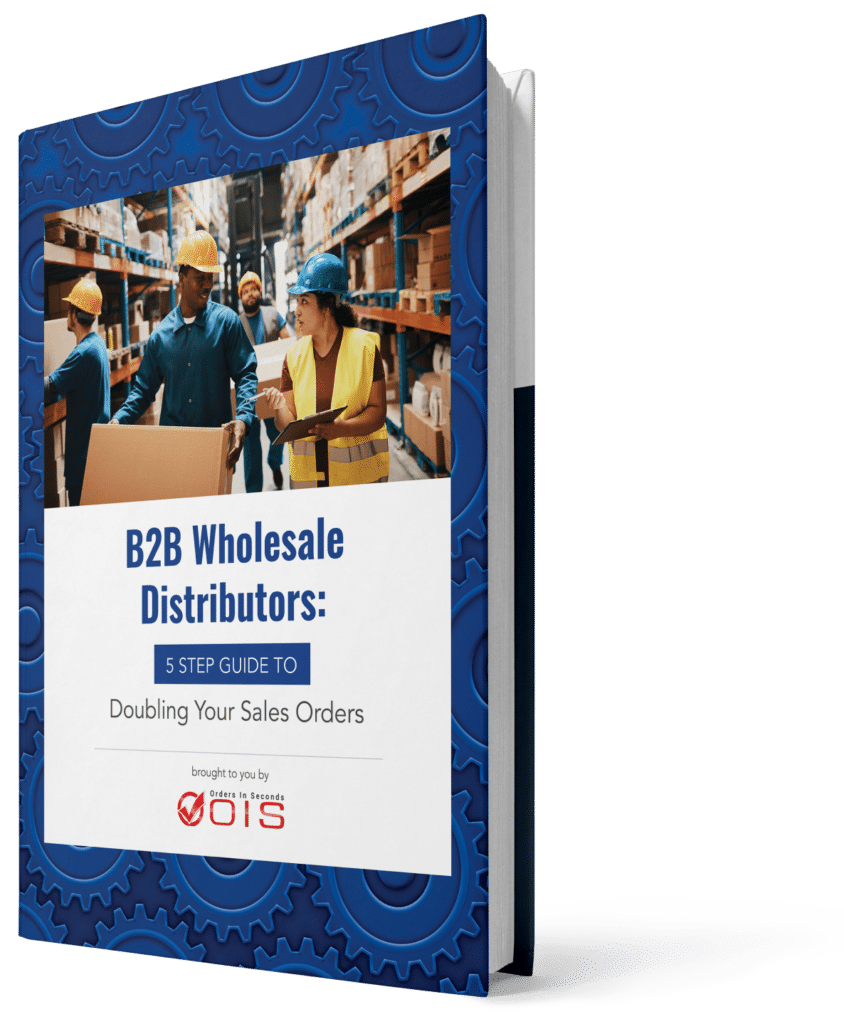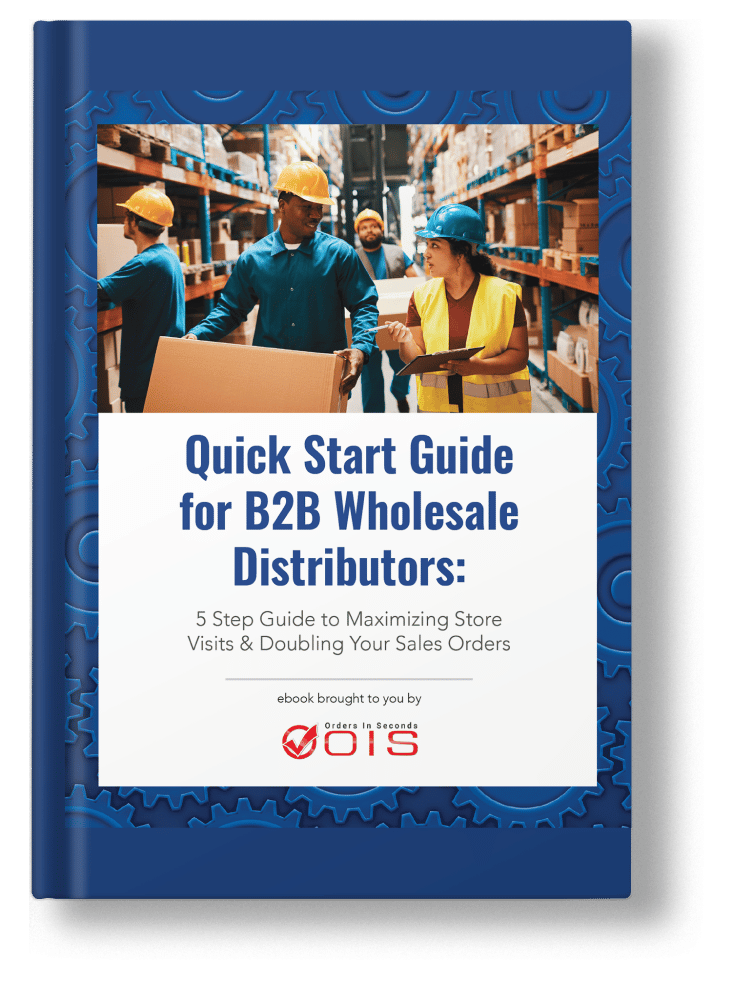To find the ending inventory, start with the basic formula that includes the cost of goods available and choose from methods like FIFO, LIFO, or weighted average cost. In this guide, we will show you how to find the ending inventory by breaking down each step to help you accurately value unsold goods at the end of your accounting period.
Key Takeaways
- Ending inventory is crucial for understanding a company’s financial health, impacting assets, profits, and tax obligations.
- Different methods of calculating ending inventory—FIFO, LIFO, and Weighted Average Cost—consider the inventory purchased and yield varying results, affecting reported income and financial statements.
- Regular physical counts and advanced inventory management software are essential best practices for maintaining accurate inventory records and optimizing stock levels.
Table of Contents
- Understanding Ending Inventory
- The Basic Ending Inventory Formula
- Key Methods to Calculate Ending Inventory
- Alternative Ending Inventory Calculation Methods
- Practical Applications of Ending Inventory Data
- Best Practices for Accurate Ending Inventory Calculation
- How Technology Can Simplify Ending Inventory Management
- Summary
- Accurate Picking Leads to Accurate Ending Inventory
Understanding Ending Inventory
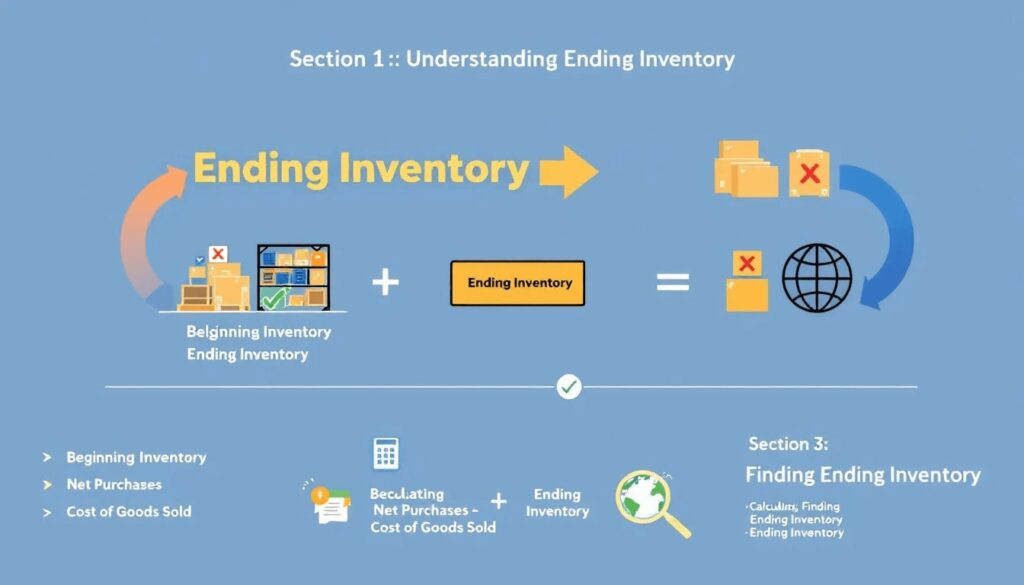
Ending inventory, or closing inventory, represents the total value of goods available for sale at the conclusion of an accounting period. It is a critical component of a company’s balance sheet and is classified as a current asset. Accurate assessment of ending inventory is crucial for understanding a company’s assets, profits, and tax obligations, directly influencing financial reporting, cash flow, and balance sheets. A physical inventory count is essential for ensuring the accuracy of these records and identifying any discrepancies.
Proper calculation of ending inventory is essential for accurate cost of goods sold (COGS), impacting gross profit. Higher ending inventory decreases COGS, while lower ending inventory increases it. Accurate calculations are critical for budgeting, cash flow projections, and obtaining financing, as lenders view it as an asset.
Ending inventory, also known as closing inventory, is the total value of goods available for sale at the end of an accounting period. This metric is crucial for businesses to track as it directly impacts their financial health and operational efficiency. Accurate ending inventory records are necessary for maintaining precise inventory levels, which in turn enhances business profitability. By understanding the value of unsold goods, companies can make informed decisions about purchasing, production, and sales strategies. Moreover, accurate ending inventory calculations are essential for financial reporting, as they affect the cost of goods sold (COGS) and, consequently, the gross profit. Ensuring that ending inventory is correctly calculated helps businesses maintain proper cash flow, meet tax obligations, and present a true picture of their financial health.
The Basic Ending Inventory Formula

Inventory management starts with understanding the basic formula for calculating ending inventory: Beginning Inventory + Net Purchases – Cost of Goods Sold (COGS). This straightforward equation helps businesses track inventory levels by accounting for initial inventory, adding inventory purchased, and subtracting costs associated with goods sold.
For instance, if a company starts with a beginning inventory of $10,000, makes net purchases worth $5,000, and has a COGS of $12,000, the ending inventory would be calculated as $10,000 + $5,000 – $12,000 = $3,000. This basic ending inventory formula is fundamental for accurate financial reporting and inventory management.
Key Methods to Calculate Ending Inventory
Choosing the right costing method for inventory significantly impacts a company’s budgeting, reorder quantities, and gross profit. The three primary methods are FIFO (First In, First Out), LIFO (Last In, First Out), and the Weighted Average Cost method. Each method uses the cost of goods available to determine the ending inventory value.
These methods yield different inventory values, affecting reported income and financial statements.
FIFO (First In, First Out) is a method where the first items of inventory purchased are the first to be sold, ensuring newer inventory items remain while older items are sold first. For instance, in a bookstore, if the beginning inventory was $500 and the ending inventory value is $840, it shows this method’s impact on inventory valuation.
The FIFO method often results in a higher ending inventory value during periods of rising prices because older, cheaper items are sold first, leaving the newer, more expensive items in stock. This can be clearly seen in a transaction where five items bought at $15 are sold for $15 each, resulting in a COGS of $70.
FIFO helps businesses maintain a realistic view of inventory costs and profitability.
The Last In, First Out (LIFO) method assumes that the most recently purchased inventory is the first to be sold, often leaving older, cheaper items in the ending inventory. For example, with a beginning inventory of $5,000, inventory purchased totaling $2,400, and COGS of $1,170, the ending inventory would be $6,230.
LIFO is useful during inflation, resulting in higher COGS and lower gross profit, reducing the income tax bill. However, this method can also lead to lower reported earnings, which might not always be favorable for financial reporting.
The Weighted Average Cost method averages the cost of inventory purchased by dividing the total cost by the total volume. This method is best when all products sold are identical, ensuring a consistent cost basis for valuation, but is less effective for businesses with diverse products and varying prices.
For instance, if the beginning inventory consists of 100 items at $2.50 each and 300 more are purchased at $3.50 each, the average cost per item is calculated, leading to an ending inventory value of $6,360.
This method simplifies calculations and provides a balanced view of inventory costs.
Alternative Ending Inventory Calculation Methods

When physical inventory counts are not feasible, businesses can estimate ending inventory using methods like the Gross Profit Method and the Retail Inventory Method.
These methods rely on business data and ratios to estimate inventory levels effectively.
The Gross Profit Method estimates ending inventory based on the gross profit margin, the percentage of profit remaining after subtracting production costs. For example, with net sales of $1,000,000 and an expected gross profit margin of 30%, the COGS would be estimated at $700,000, leading to an ending inventory of $570,000.
This method is useful for businesses with consistent sales and profit patterns, providing a quick and reliable inventory estimate. However, periodic verification with physical counts is necessary to ensure accuracy.
The Retail Inventory Method estimates ending inventory by applying a cost-to-retail ratio, eliminating the need for physical counts. For example, with net sales of $600,000 and a cost-to-retail ratio of 70%, the estimated ending inventory using the retail method would be $410,000.
Frequent price changes can affect the reliability of this method. It relies on consistent markup percentages for accuracy, making it ideal for retail businesses with stable pricing strategies.
Practical Applications of Ending Inventory Data
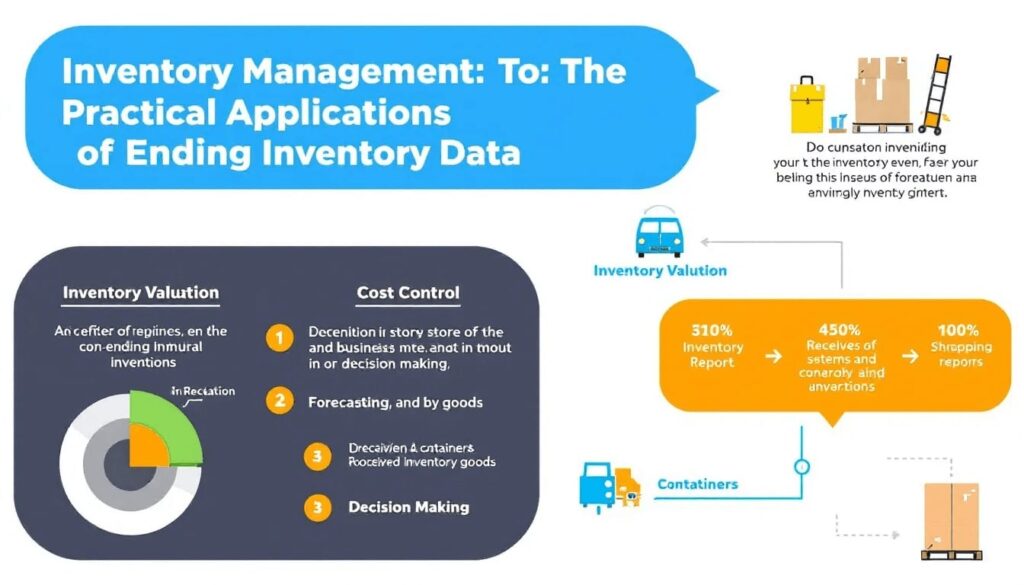
Ending inventory data has numerous practical applications, including financial reporting, optimizing stock levels, and improving supply chain management. Leveraging this data enhances overall performance and decision-making.
Accurate ending inventory calculations are vital for producing reliable financial statements that reflect the company’s true financial condition, ensuring investor confidence. Inaccurate inventory can lead to tax issues, misreported profits, and poor decision-making.
Regularly comparing calculated ending inventory with physical counts identifies shrinkage caused by theft, damage, or errors. Matching recorded inventory with actual inventory is crucial to verify accuracy and detect discrepancies, revealing issues like employee theft, return fraud, and shoplifting, protecting margins and improving accuracy.
Analyzing ending inventory optimizes stock levels, avoiding overstocking and stockouts. These calculations help companies manage stock and adjust production based on demand, better aligning stock levels with customer needs and minimizing excess inventory and shortages.
Inventory management software provides analytics to identify slow-moving inventory, helping businesses make informed purchasing and production decisions. Leveraging this data ensures the right products are in stock at the right time, optimizing inventory levels.
Ending inventory data assists in timing orders and adjusting procurement strategies to optimize supply chain efficiency, providing insights into stock levels and turnover rates for better planning and execution.
Ending inventory data enhances supply chain management by providing insights into stock levels and turnover rates. Using this information improves supply chain operations, reduces lead times, and ensures timely product delivery.
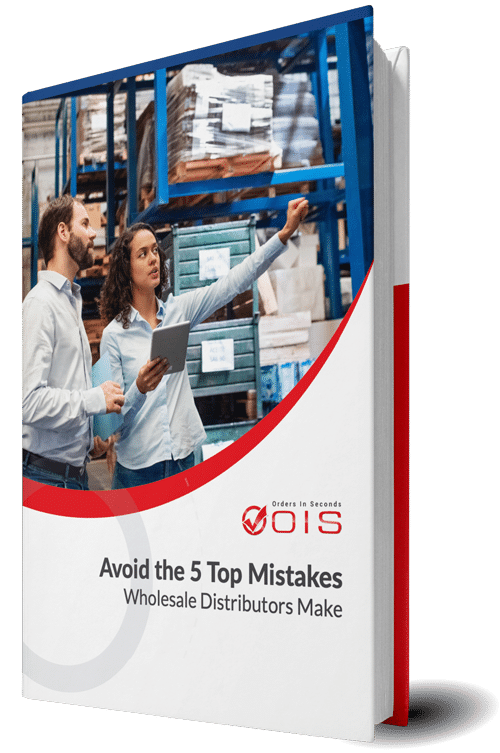
Avoid the Top 5 Mistakes Wholesale Distributors Make
Are you making one of the top 5 mistakes that plague wholesale distributors? Download our free eBook to find out. We’ve also included tips and guidance to help you save time and avoid costly mistakes.
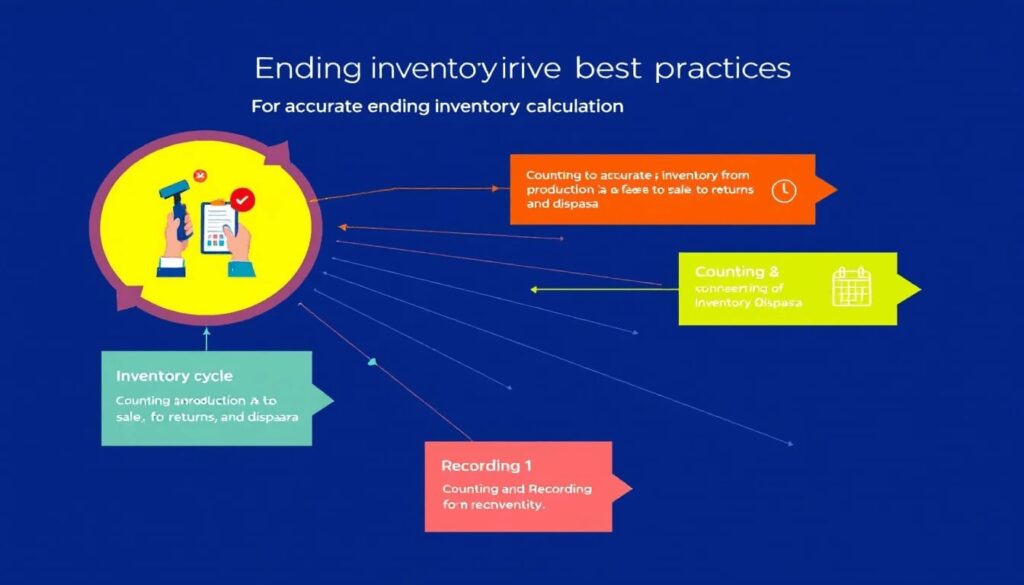
Accurate ending inventory calculations require best practices like regular physical inventory counts, consistent valuation methods, and utilizing inventory management software.
Regular physical inventory counts are essential for maintaining accurate records, identifying discrepancies between recorded and actual inventory levels, and ensuring data reliability.
Regular physical inventory count uncovers issues like shrinkage, theft, or accounting errors, allowing prompt corrective actions, and is fundamental for accurate financial reporting and inventory management.
Selecting a valuation method that aligns with business operations and sticking to it ensures consistent and accurate inventory calculations and financial reporting.
Maintaining accurate records of incoming shipments, sales, returns, and adjustments is key to ensuring precise ending inventory calculations. This involves documenting all inventory transactions, such as purchases, sales, and returns, and keeping track of inventory levels throughout the accounting period. Regular audits and reconciliations can help identify discrepancies and ensure that inventory records align with actual stock. By systematically recording every inventory movement, businesses can avoid errors and discrepancies that could lead to inaccurate financial reporting. Proper documentation also aids in tracking inventory trends, managing stock levels, and making informed decisions about future inventory purchases. Implementing a robust record-keeping system is essential for accurate ending inventory calculations and overall inventory management.
Well-trained staff are more likely to follow standardized processes, reducing errors and ensuring accurate ending inventory calculations. Establishing clear accountability encourages adherence to best practices and fosters a culture of precision. Regular training and education on inventory management and accounting principles can help staff understand the importance of accurate ending inventory calculations and their role in maintaining accurate records. By investing in staff training, businesses can ensure that employees are equipped with the knowledge and skills needed to manage inventory effectively. Additionally, creating a system of accountability where staff are responsible for specific inventory tasks can help maintain consistency and accuracy in inventory records. This approach not only improves the accuracy of ending inventory calculations but also enhances overall inventory management and operational efficiency.
Advanced inventory management software automates tasks and enhances accuracy by tracking, streamlining data entry, and reducing human errors. These systems provide real-time visibility of inventory levels, keeping records up-to-date.
Cloud-based inventory management systems offer scalability and real-time tracking, growing with organizational needs and managing large volumes of data. Implementing these systems leads to more efficient inventory management, supporting better decision-making and business performance.
How Technology Can Simplify Ending Inventory Management
Technology simplifies ending inventory management by automating monitoring through third-party logistics (3PLs), providing real-time reporting and streamlining processes. These systems track inventory movements and provide instant updates, reducing manual effort.
Data analytics tools enhance inventory accuracy by optimizing stock levels, predicting future needs, and identifying patterns. Technologies like autonomous vehicles and drones boost efficiency by speeding up stocktaking and reducing human errors.
Software solutions like Cin7 centralize inventory reporting, helping businesses manage levels effectively and ensuring all data is accessible in one place.
Summary
In conclusion, understanding and accurately calculating ending inventory is fundamental for any business dealing with physical products. The methods discussed, including FIFO, LIFO, and Weighted Average Cost, offer different approaches to inventory valuation, each with its implications for financial reporting and tax liabilities. Alternative methods like the Gross Profit Method and Retail Inventory Method provide useful estimates when physical counts are impractical.
By implementing best practices such as regular physical counts, consistent valuation methods, and leveraging technology through advanced inventory management software, businesses can ensure accurate inventory records, optimize stock levels, and enhance supply chain management. Accurate ending inventory data not only supports reliable financial reporting but also drives informed decision-making, ultimately leading to improved business performance. Embrace these strategies to keep your inventory management in top shape and your business thriving.
Frequently Asked Questions
Ending inventory refers to the total value of goods that a company has on hand and available for sale at the conclusion of an accounting period. This figure is crucial for accurate financial reporting and inventory management.
Accurate ending inventory is essential because it directly impacts financial reporting, COGS, gross profit, and tax obligations, ensuring the business maintains proper cash flow and budgeting. Without accuracy, your financial health may be misleading, leading to poor decision-making.
The basic formula for calculating ending inventory is: Beginning Inventory + Net Purchases – Cost of Goods Sold (COGS). This formula provides a clear method to determine your inventory level at the end of a period.
The FIFO method leads to higher ending inventory values in times of rising prices, as it prioritizes the sale of older, less expensive items, thus retaining newer, costlier items in inventory. This can enhance the balance sheet value but may not reflect the true cost of goods sold.
Technology plays a crucial role in inventory management by automating processes, enabling real-time tracking, and improving accuracy through advanced inventory management software and data analytics tools. This ultimately leads to more efficient and effective inventory control.
Accurate Picking Leads to Accurate Ending Inventory
Accurate ending inventory doesn’t just happen at the close of an accounting period—it starts with every order picked right the first time. The OIS Inventory app helps you automate warehouse order picking, reduce human error, and keep your inventory records clean and reliable. Whether you use FIFO, LIFO, or Weighted Average Cost, better data in means better insights out. Schedule a demo and see how streamlined picking can support smarter inventory valuation.




